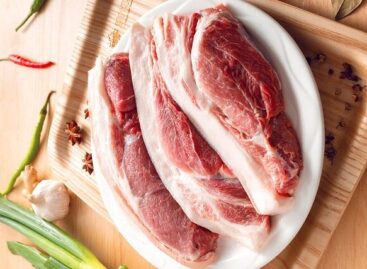The plum season is in full swing, the star fruit of autumn is already available in the markets
This year’s plum harvest will be weaker than average, farmers can harvest around 40-50 thousand tons of the popular fruit – according to the joint market overview of the National Chamber of Agrarian Economy and the Hungarian Vegetable and Fruit Association (FruitVeb). About 60 percent of domestically grown plums are used industrially, jam, preserves and brandy are made from them.

The plum season is in full swing, although the weather was not favorable for plum cultivation, the cool spring weather had an adverse effect on the productivity of some varieties, the rainy weather during flowering made it difficult to protect against the monilia infection, so a weaker than average harvest is expected this year. Farmers can harvest between 40,000 and 50,000 tons this year.
The climate of our country creates suitable conditions for growing plums almost everywhere
Light-loving plant, tolerates cold well. It blooms in late spring, so early frosts rarely harm it. At the same time, since it has shallow roots, the permanent lack of precipitation takes a toll on it. Plums can be grown everywhere, except for extreme quicksand and saline soils. The size of the production area has decreased slightly in recent years, but production is increasingly shifting towards intensive, hand-picked plantations. According to this year’s area-based support data, farmers grow plums on around 5,848 hectares. The largest growing area is still in Szabolcs-Szatmár-Bereg County, where plums are grown on 1,636 hectares, Bács-Kiskun County is in second place with 1,197 hectares, but there are also significant plum plantations in Pest County, with farmers working with this fruit on around 956 hectares.
There are 22 plum varieties, 3 Japanese plum varieties and 13 landscape varieties in the National Varieties Register
Varieties differ in size, color (red, purple, yellowish, greenish, dark blue), shape (round, ovoid, spherical, oblong), seed separation, juiciness, aroma and ripening time. We basically distinguish between four categories. Domestic plums are elongated, dark blue in color, the flesh is yellow, and the flesh separates from the seed when ripe. The ringló – named after the wife of the French King Francis I – has a greenish-yellow skin and greenish, whitish, sweet flesh. There is a seam on the fruit of the plum, its color is blue or purple, but it also occurs in red and yellow versions. Mirabella is characterized by small, spherical, yellow fruits and sweet flesh.

In our country, the highest proportion of varieties belonging to the domestic plum (Prunus domestica) with a high degree of ecological tolerance are grown
Recently, farmers have planted the Cacanska lepotica variety in the largest proportion, but the Stanley and Besztercei clones are also still popular. The latter is still widespread in traditional growing areas, in Szabolcs-Szatmár-Bereg county. German, Serbian, and Romanian plum varieties that are more resistant to the sharka virus, have high productivity, and are often self-fertile (e.g. Jojo, Valjevka, Top series) have appeared in our plantations and will probably play an increasingly important role. Thanks to the many domestic varieties, plums ripen from mid-July to October. The plum peak starts at the end of August, when the industrial processing of plums also begins. A significant part of the plums grown in our country, about 60 percent, is processed by the industry, in addition to jam and halved preserves, the fruit serves as the raw material for pálinka. One of the most popular varieties, Stanley, begins to ripen in mid-August. Toptaste is one of the best-tasting, sweet plum varieties for fresh consumption, while Haroma and Presenta are also excellent for jam, from which you can make preserved and pickled plums. The Topfive variety can be a good choice for cakes, which not only has a high sugar content, but also a suitable acid content.
Plums are a real vitamin bomb: a natural source of vitamins A, B, C, E and K, high in antioxidants and minerals
Its vitamin and antioxidant content is not only important from the point of view of the prevention of cancer, but can also be an effective help against wrinkles, for example. Plums are also called the natural secret to slimness, because not only does it effectively help you lose weight, but it also prevents obesity due to its chlorogenic acid content. Nutritious fruit, which is an effective solution for anemia and iron deficiency, thus improving the well-being. Due to its 85% water content, the plum is a very good thirst quencher, and thanks to its fiber and sorbitol content, it is a well-known laxative. A handful or two of fresh or prunes a day will move the bowels and promote the elimination of waste products. If eaten raw, choose the ripest, sweetest pieces. Soft and overripe fruits with a higher sugar content are used for jam and plum brandy. Less ripe plums are better for pickles and meats. Plums last a relatively long time in the refrigerator and are an excellent fruit for freezing.
NAK/FruitWeb
Related news
The Ministry of Agriculture has issued a notice on the use of ENAR data in support policy
In the case of animal-based subsidies financed from EU funds,…
Read more >Dishes made from Hungarian pork should be on the holiday table!
Not only fish dishes are in the spotlight during the…
Read more >Farmer-centric agricultural policy after 2027 receives unanimous support
The EU member states’ agriculture ministers have adopted Council conclusions…
Read more >Related news
The Joy of Giving! – SPAR stores collect non-perishable food for people in need
The Hungarian Maltese Charity Service and SPAR Hungary have launched…
Read more >Technological advancements and business travel
The latest research from International Workplace Group (IWG), the leading…
Read more >K&H: a gift, but what and from which store?
When it comes to Christmas gift-giving, clothes are the most…
Read more >








